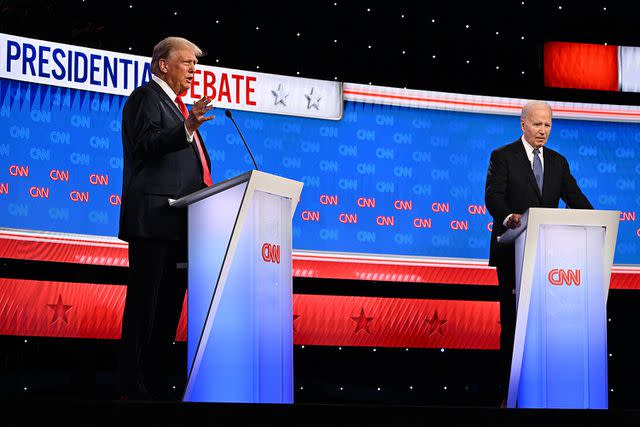Reason
Tariffs on Canada, Mexico, and China Could Start This Weekend
Eric Boehm – January 31, 2025

Huge new tariffs on goods imported from Canada, China, and Mexico could begin as soon as this weekend.
White House Press Secretary Karoline Leavitt told reporters at a Friday press conference that the Trump administration was prepared to impose a new 25 percent tariff on imports from Canada and Mexico, along with a 10 percent tariff on imports from China. Aside from that statement, Leavitt offered few specifics and the White House has so far not released any further details about the new import taxes.
That leaves many unknowns, such as: Under what authority is President Donald Trump implementing those tariffs? Are there exceptions for certain goods, or are the tariffs being charged on all imports from the three countries? Do those tariffs apply on top of existing import duties—for example, is the new 10 percent tariff on goods from China imposed on top of the tariffs on many Chinese imports that Trump implemented during his first term—or in place of them? Will there be a process for certain companies and industries to seek relief from tariffs for goods that cannot be sourced in the United States, like tequila?
Adding to the confusion: Reuters reported earlier on Friday that those tariffs will be implemented on March 1. Leavitt called that report “false.”
Canada, China, and Mexico are the United States’ three largest trading partners. In 2023, the last full year for which data are available, the U.S. imported $475 billion of goods from Mexico, $426 billion from China, and $418 billion from Canada.
In her remarks to reporters, Leavitt said the new tariffs were being issued in response to the “illegal fentanyl that they have sourced and allowed to distribute into our country.” In an interview with CNBC on Friday, Trump’s trade advisor Peter Navarro also claimed that “fentanyl…that comes from China and Mexico” was the prime motivator for the new import taxes.
This makes very little sense. How will higher taxes on legal imports affect the flow of illegal drugs?
What the tariffs will do is raise prices for American businesses and consumers.
Though much uncertainly remains about how these tariffs will function, a full-fledged 25 percent tariff on goods from Canada and Mexico, plus a 10 percent tariff on all imports from China, would be a tax increase of $111 billion this year and would shrink the U.S. economy by 0.4 percent, according to estimates by the Tax Foundation.
“Several industries would experience severe disruption, including autos, oil & gas, and agriculture,” wrote Erica York, vice president of policy at the Tax Foundation, in a post on X shortly after Leavitt announced the new tariffs.
Auto manufacturers, which rely on supply chains that stretch across the whole of North America—thanks to free trade agreements—figure to be some of the hardest hit. “Steep tariffs on vehicles would not only raise prices north of the border and shock the Mexican auto sector and its workers. They would also cost jobs in the United States,” warned the Peterson Institute for International Economics, in December. “Because of the highly integrated value chains in the North American auto sector, a high share of US-origin parts are embedded in Mexico’s motor vehicle exports. US suppliers of these parts could soon be caught in the crossfire of Trump’s trade war.”
Fruit and vegetable imports from Mexico will be another victim. “If you put tariffs on Mexican fruits and vegetables, there’s no doubt about it, you’ll have inflation in the supermarket and you will have bare shelves,” Lance Jungmeyer, president of the Fresh Produce Association of the Americas, told The Packer, a trade publication, in November. “Consumers will not be happy with that.”
Tariffs on crude oil imports from Canada will likely drive up prices at the gas pump. More than 50 percent of the crude oil imported to the U.S. comes from Canada, and analysts believe tariffs could cause prices to jump by 40 cents or even 70 cents per gallon. If those tariffs spiral into a broader trade war, energy companies are already warning about “volatility in crude oil prices, impacting refineries and downstream fuel markets, especially for gasoline and diesel.”
There are also unanswered questions about how the other countries might respond. “All three governments have promised to answer Mr. Trump’s levies with tariffs of their own on U.S. exports, including Florida orange juice, Tennessee whiskey and Kentucky peanut butter,” The New York Times notes.
Make no mistake, this is a trade war of choice being launched unilaterally by Trump. It is a foolish and self-destructive move, one that (in the case of tariffs on Canada and Mexico, at least) directly violates a trade deal Trump signed during his first term and hailed as “the fairest, most balanced, and beneficial trade agreement we have ever signed into law. It’s the best agreement we’ve ever made.”
Tariffs are not a path to peace or prosperity, and igniting a trade war with America’s three largest trade partners is sure to have negative consequences no one can foresee at the moment.
“Sound fiscal policy and effective incentives to work, save and invest can increase economic growth, but the implementation of broad-based tariffs impedes that growth and in a full-blown trade war would overwhelm it,” warned economists Phil Gramm and Larry Summers, in a powerful op-ed published Friday in The Wall Street Journal. “We therefore urge Congress not to adopt the administration’s proposed tariffs and urge the president not to implement those tariffs by executive order.”
Congress should act immediately to block these tariffs, reassure America’s top trade partners and other allies, and revoke much of the president’s authority over trade.















